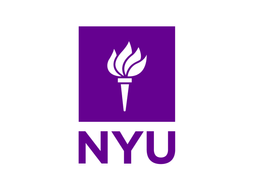Winning the Plant the Moon Challenge 2023 (PTMC) - 10 Tips to Help You
Competitions provide a unique platform for students like you to grow in ways that other programs might not allow. They give you the opportunity to turn theory into practice and engage in real, hands-on experiences. You get to showcase your talents, foster innovation, and deepen your understanding of real-world problem-solving. Participating in contests not only enhances your skills but can also serve as a noteworthy addition to your college applications, demonstrating initiative, passion, and a commitment to academic excellence.
STEM contests are beneficial in particular because of the exposure you get to your specific field of interest. Through these competitions, you will develop practical technical skills that are directly applicable to STEM professions, learn about emerging technologies and discoveries in the field, and get lab experience in a controlled setting. One such competition is the Plant the Moon Challenge, otherwise known as the PTMC.
What is the Plant the Moon challenge?
The Plant the Moon challenge is a unique competition for students interested in biology and astronomy that studies the idea of growing vegetables on the moon. As a participant, you will be tasked with conducting experiments to test which crops can grow in lunar soil. You will work in teams of up to 10 people and work with real lunar soil simulant from the University of Central Florida’s CLASS Exolith Lab. The end goal is to grow crops for a long-term lunar mission.
Together, you and your team will go through four parts of the experimentation process: Research, Design, Plant and Monitor, and Analyze and Present. The program offers live events and networking opportunities as extra support along with the experiments. In the end, you will present your project at a virtual symposium to NASA scientists who will evaluate your work. The teams with the best plant growth results will be given awards.
Who is eligible?
There is no minimum or maximum age restriction. Instead, participants will be categorized in one of five age groups — Elementary, Middle School, High School, Undergraduate, and Professional. All students under the age of 18 must have an adult acting as their coach.
International students are allowed to participate but must register early so that the experiment kit can be shipped to them in time.
Dates and Deadlines
The Plant the Moon challenge has previously had spring and fall sessions every year, with an additional summer session held in 2021. Following are the dates for the spring session of 2024:
Application deadline: January 14, 2024
Opening symposium: January 22, 2024
Program dates: 10 weeks from February to May
Closing ceremony: May 8, 2024
What is the cost?
Team registration costs $405, including a kit for the experiments. It comes with a 5kg bag of lunar or Martian simulant, a pH meter, ten KN95 masks, ten pots, and a flier. You will need more supplies like seeds and soil amendments, so set a part of your budget aside for that as well.
The program, in association with NASA Space Grant Consortiums, offers funding in specific states. Previous teams have also approached local companies and received financial support from them.
What are the prizes?
Once all participants have presented their work at the virtual symposium at the end of the program, the teams with the best results will win Best-in-Show awards. During the Spring 2023 cohort, over 7,000 students were involved in the contest and 16 teams won the Best-in-Show awards.
Is this a prestigious competition?
This contest is organized by the Institute of Competition Sciences and is in collaboration with NASA’s Solar System Exploration Research Virtual Institute (SSERVI) and Space Grant Regional Expansion Project. Associations with accomplished organizations like these make the Plant the Moon challenge a prestigious competition that can boost your resume. Seeing as your work will be judged by NASA scientists, an award from this contest will elevate your profile in the eyes of college administrators as well.
10 Tips to Help You Win the Plant the Moon Challenge
Competitions like this one are made to push your limits and test your skills, so it can seem pretty daunting. Here are 10 tips that can help you win the contest:
Build a strong team. The success of your Plant the Moon Challenge journey starts with your team. Choose teammates who are not only collaborative and easy to work with but also bring diverse perspectives. A mix of skills and knowledge from different areas can enhance the creativity and problem-solving abilities of your team.
Make the best of official resources. Unlock the full potential of the Plant the Moon Challenge by diving deep into the provided Project Guide. Use it as your roadmap, taking advantage of the guidance and checkpoints it offers. Additionally, leverage the program's networking opportunities to connect with knowledgeable individuals who can provide valuable information, advice, and assistance.
Learn from past winners. Explore the winners' entries from previous Plant the Moon Challenges to gain insights into the level of work expected. Analyze past projects to identify potential gaps in the field and areas that haven't been explored thoroughly. This not only helps you understand the competition better but also allows you to carve out a unique niche for your project. You can go through previous winners’ projects here.
Find a sponsor. While the program provides you with a kit of essential materials, consider finding a sponsor to enhance your resources. The extra funding will support you if you need additional supplies like fertilizers or seeds. The Plant the Moon Challenge, in collaboration with NASA Space Grant Consortiums, offers funding in specific states, but exploring local companies for financial support is also a viable option.
Draft a plan. Plan out the 10-weeks of the program in an efficient manner, establishing clear checkpoints for each phase of your experiment. Organize team duties transparently to minimize confusion, ensuring everyone knows their responsibilities. Effective communication within the team is key to a seamless and successful project.
Document everything. Maintain detailed records throughout your experiment. Document the setup, any changes made, and observations meticulously. Visual documentation, such as photos and videos, adds depth to your records and proves invaluable when compiling your final project report.
Craft clear hypotheses and objectives. Clearly articulate your experiment's hypotheses and objectives as judges would appreciate a well-defined project with a clear purpose. Ensure your experiment aligns with the goals of the Plant the Moon challenge and contributes to the broader objective of supporting future space missions.
Ensure comprehensive data collection. Pay meticulous attention to data collection. Collect a comprehensive set of data points related to plant growth, environmental conditions, and other relevant variables. Utilize graphs and charts to present your data effectively. This will showcase your commitment to thorough scientific practices.
Provide thorough analysis and interpretation. Go beyond presenting raw data by offering a thoughtful analysis and interpretation. Discuss trends, correlations, and any unexpected outcomes. Demonstrate a deep understanding of the implications of your findings, showcasing your team's analytical prowess.
Prepare for the symposium. Don’t overlook the importance of presentation skills. Your experiment holds value only if you can clearly convey the process, outcomes, and implications. This might need particular attention since the symposium is a virtual one. Work on your oratory skills, include visuals in your presentation, and remember that you will be showcasing your project to NASA scientists.
If you’d like to supplement your competitive experience with independent research, consider applying to Horizon’s Research Seminars and Labs!
This is a selective virtual research program that lets you engage in advanced research and develop a research paper on a subject of your choosing. Horizon has worked with 1000+ high school students so far and offers 600+ research specializations for you to choose from.
You can find the application link here
If you’re looking for the opportunity to work on an in-depth research project instead, you could also consider applying to one of the Lumiere Research Scholar Programs, selective online high school programs for students I founded with researchers at Harvard and Oxford. Last year, we had over 4000 students apply for 500 spots in the program! You can find the application form here.
Stephen is one of the founders of Lumiere and a Harvard College graduate. He founded Lumiere as a PhD student at Harvard Business School. Lumiere is a selective research program where students work 1-1 with a research mentor to develop an independent research paper.
Image Source: PTMC logo










